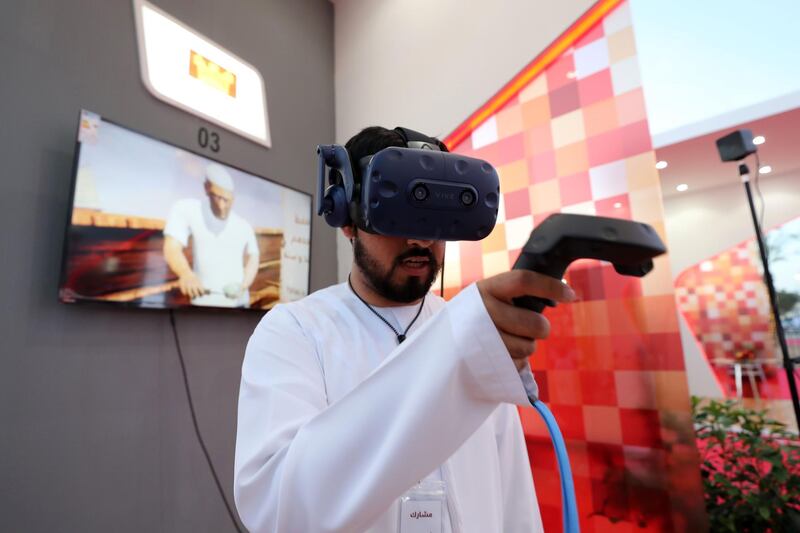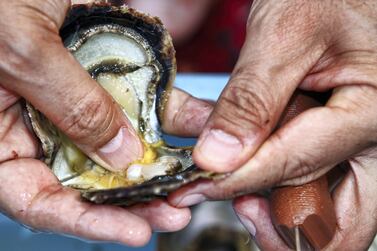UAE residents can now go on a voyage of discovery through the country's rich pearl diving past - without even leaving dry land.
Culture chiefs in Ras Al Khaimah turned to technology to roll out a new virtual reality history lesson on the time-honoured Emirati tradition.
Forward-thinking staff at the emirate's Antiquities and Museums Department set out to educate younger generations about the importance and perils of pearling, which played a crucial role in the economy before the discovery of oil.
In the 19th century pearl diving accounted for as much as 95 per cent of the region's income, and at its height early in the 20th century, about 80,000 men worked on the pearling vessels - 22,000 in the Trucial States alone.
“Pearling formed a large part of the region’s economy many years ago and was considered the most dangerous and difficult profession at that time,” said Ahmed Al Teneiji, general manager of the department.
“Pearl diving is difficult to be demonstrated and thoroughly explained, so we decided to let people experience it through technology and virtual reality.”
The department devised the plan nine months ago and has since collected a treasure trove of data about pearl diving and enlisted companies experienced with VR technology to help transform a bright idea into a reality.
Using a VR headset and motion controllers, users can live the life of a pearl diver in a virtual setting.
“This technology allows the public to experience pearl diving and face the challenges that their grandparents encountered in the old days,” said Mr Al Teneiji.
“The experience starts with a short introduction of pearling history while on a boat and then each tool used is explained to the user.”
Tools such as a nose clip, made of turtle shell or sheep’s bone to hold the diver’s nose closed and prevent water from entering, a cowhide glove to protect the divers' fingers while picking oysters and a woven bag that divers used to wear around the neck to hold the oysters they collect are explained.
“The user will then dive into the water and start searching for pearls,” he said.
The experience can take up to five minutes and at the end, a sailor called Al Yallas will count the number of oysters collected by the diver and open them to look for pearls.
“They will learn how to collect pearls, open them and get information about their types,” said Mr Al Teneiji.
“It is part of our heritage that we intend to keep and pass it on to the future generations.”
The VR device will be based at the National Museum of Ras Al Khaimah and will be used for schools visits, festivals and traditional events.
The department is also considering creating more VR experiences with virtual models of archaeological sites and other traditional professions in the future.
The new technology was launched at Corniche Al Qawasim Innovation Festival on Wednesday and proved a hit with visitors.
“It is a very entertaining and educational experience that is hard to achieve in the real world,” said Humad Al Shehhi, 26.
“They tell you about the pearling history and techniques and let you dive to look for pearls.”
Ali Al Shalish, 9, also had a blast with the past.
“I enjoyed it a lot and didn’t want to it to finish,” he said.
“I will tell all my friends and classmates that I learned something new about the UAE and how the Emiratis used to dive for pearls in the past.”







